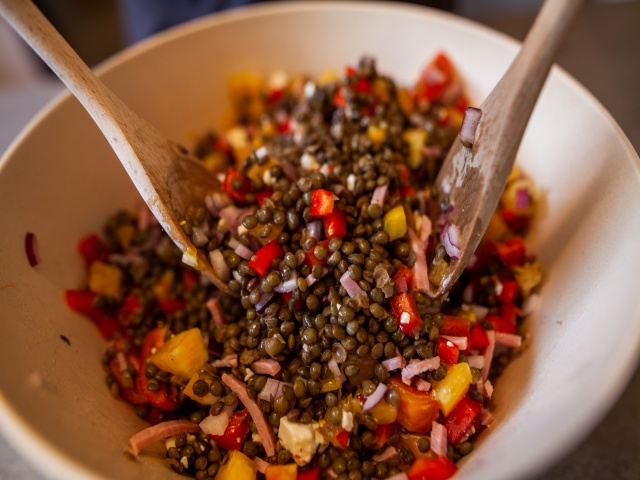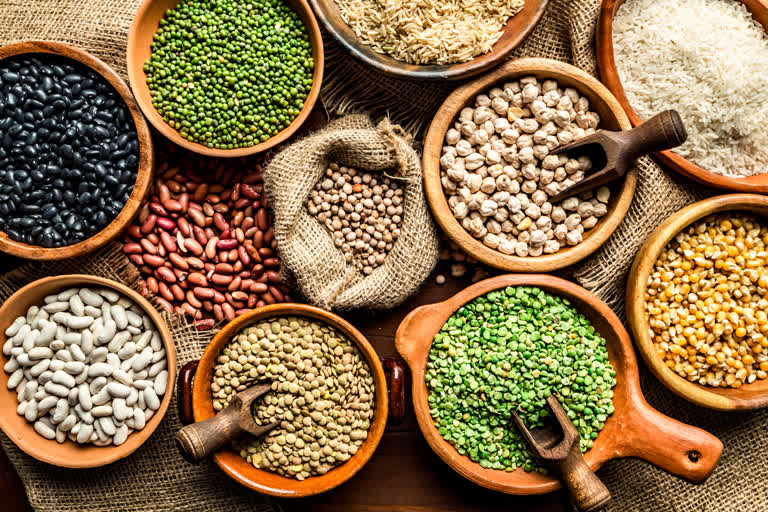When the word protein comes, people are more likely to think of meat, chicken, fish, or eggs. That makes sense, meat is one of the sources of protein but not the only one. In Fact, it’s possible for you to get protein without eating non-vegetarian products.
Protein is a macronutrient required by the body in large amounts. It is the building blocks of bones, muscles, cartilage, skin, and blood. It is essential for the growth and repair of the body and maintenance of good health. Amino acids are the building blocks of protein; some can be produced by the body but some need to be consumed. There’s a huge misconception that plant-based diets are low in protein. Vegetables, fruits, grains, nuts, seeds, legumes- they all have protein.
Here are some plant-based protein foods:
- Soy Products- Things such as Tofu, Tempeh, and Edamame- Soy products are among the richest source of plant-based protein and contain good levels of iron and calcium. They are a complete source of protein.

- Lentils- Lentils are a good source of protein, fiber, and other nutrients like iron and potassium. They can be added to a variety of dishes like stews, curries, salads, soups or rice to give an extra portion of protein. Dal and rice is a good source of it.
- Chickpeas and other varieties of beans- They are also good sources of complex carbs, fiber, iron, potassium, and other vitamins and minerals. You can prepare Rajma chawal, rajma salad, chickpea hummus on toast, beans on toast, etc.

- Nuts- Nuts and derived products are great sources of protein. They are also great sources of fiber and healthy fats along with other vitamins and minerals.
- Seeds- Seeds are a powerhouse of proteins, low- calorie foods, rich in fiber, and heart-healthy omega-3 fatty acids. They can be added to smoothies, sprinkled over yogurt, salads, soups, pulses, make chia pudding, etc.
- Quinoa- Quinoa is a grain with high protein content and is a complete protein It is also rich in other nutrients like magnesium, iron, fiber, and manganese. Other grains like amaranth, sorghum, oats, buckwheat, millets like Ragi, bajra, etc are also very high in protein. You can make- quinoa risotto, quinoa salad, quinoa with vegetables, quinoa tikki, etc.
- Combining two incomplete protein sources helps to obtain a better mixture of proteins or complete protein. Eating 2 or more of these incomplete proteins together forms a complementary protein and this complementary effect is termed as Mutual Supplementation.
Here are some examples of complete proteins-
- Rice and dal
- Peanut butter sandwich on whole grain bread
- Hummus with whole grain bread/ whole grain pitas
- Salad made with beans and nuts or seeds
- Yogurt with sunflower seeds or almonds
NOTE- Some high-protein diets include foods such as red meats and full-fat dairy products, which may increase your risk of heart disease. Also, a high protein diet may worsen kidney function in people with kidney disease.
Inputs:
Divya Gupta
Consultant Nutritionist
Diabetes Educator
You can reach out to Divya Gupta with your queries at nutritionistdivyagupta@gmail.com


